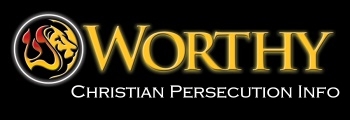Recent demonstrations are sure to bring more repression for minority Christians.
Special to Compass Direct
LOS ANGELES, May 17 (Compass) -- During the Easter weekend of April 10 and 11, and on some days afterward, Montagnards in Vietnam’s Central Highlands attempted to stage demonstrations to call attention to the harsh injustices they suffer at the hands of communist authorities and ethnic Vietnamese settlers.
Tribal demonstrators planned to travel from home villages in a coordinated manner to several main centers, especially Buonmathuot and Pleiku cities. According to reports from Montagnards in the Central Highlands, civilians and Vietnamese security forces dressed in civilian clothes attacked the demonstrators with weapons such as clubs with embedded nails, iron bars, chains, hoes and machetes. An unknown number of Montagnards were killed, hundreds more were injured and many are missing. These have either been arrested or have fled.
The government now admits the demonstrations involved thousands of people.
Information from several sources poured out after the events. The Vietnamese government mounted an aggressive propaganda campaign. On the other extreme, a U.S.-based organization supporting Montagnard rights, called the Montagnard Foundation Inc. (MFI), circulated its version of events.
A third line of reporting by Human Rights Watch (HRW) and other agencies avoided MFI exaggerations but challenged Vietnam on its denials, minimizations and cover up. On April 29, the World Evangelical Alliance Religious Liberty Commission weighed in with a thoughtful analysis piece involving testimony from eyewitnesses. On the same day, Amnesty International began to challenge Vietnam on its crude policies toward Montagnards and published a list of eight who had died in the demonstrations.
The Vietnamese government first responded to these events with silence, denials, and minimization, then moved to admitting that a problem existed. Vietnam blamed the conflict on naive Montagnards -- who had learning disabilities, according to one source, and were easily duped. They then painted themselves as victims of an evil plot of hostile outside forces.
Just over two weeks after the events, Vietnam took foreign diplomats and journalists to the location of the unrest. The government clearly feels in control of this propaganda war by allowing foreign journalists, including Americans, to check things out for themselves. Yet with the restrictions imposed on the journalists and diplomats, experienced observers believe the truth about what happened was concealed.
During this time, a church event became the propaganda centerpiece used to illustrate that everything was fine on the religion front. The recognized Evangelical Church of Vietnam (South) planned a special meeting to mark the official recognition of the 11th church in Gia Lai Province. Local government officials tried to dissuade church leaders from holding the meeting.
However, when the Plei R’Ngol church went ahead with this meeting, the government filmed the event and gave it inordinate exposure during the evening national TV newscast on April 13. The government has made repeated references to this event since then, but they have recognized only 16 of the more than 750 church groups that functioned in Gia Lia and Dak Lak before 2002.
Widely blamed for a part in inciting the 2001 Montagnard demonstrations, the MFI reinforced this perception when it released information on April 9 that demonstrations would occur the following day. MFI also phoned foreign reporters in Hanoi on April 9, urging them to go to the Central Highlands.
At midweek, they released a list via the Internet of the villages of 139,000 demonstrators who they said had counted the cost and joined the demonstrations. Some MFI releases talked of 150,000 demonstrators. By April 12, MFI released news that 400 Christians had been killed. Several Christian news services published this figure and related “news” in additional releases without further confirmation.
According to a respected Vietnam watcher, three problems emerged from the MFI reporting. First, the announcement ahead of the event made MFI a natural scapegoat for Vietnam. At the May 12 opening session of Vietnam’s National Assembly, government officials predictably blamed the Montagnard Foundation Inc. for organizing the protests, according to an ABC Radio Australia News report.
Second, the MFI’s constant reference to Montagnard Christians in the context of the conflict is misleading and causes great hardship for many in the Montagnard Protestant church who choose to struggle for justice in other ways. The risk to them became evident in a speech Deputy Prime Minister Nguyen Tan Dung delivered to the National Assembly in which he called for authorities to combat plots and hostile forces among the Montagnards. Vietnamese leaders vowed to punish anyone inciting further unrest in the Central Highlands.
Finally, the exaggerations of MFI diverted attention from legitimate advocacy for the Montagnards. For instance, Human Rights Watch released a report on April 14 which covered the events of the previous days and included solid documentation of heavy repression in the months leading up to the Easter weekend outbreak. HRW followed on April 22 with a significant release detailing events of April 10 and 11, based on credible sources. It reported that at least 10 people had been killed, but admitted it was impossible to cite accurate casualty figures and therefore called for international observers to investigate.
On April 29, the World Evangelical Alliance Religious Liberty Commission, citing primary sources, released Understanding the April 2004 Demonstrations in Vietnam’s Central Highlands. The same day, Amnesty International reported and listed details on eight killings.
On April 30, Vietnam celebrated the 29th anniversary of the “liberation” of the country in 1975. Ironically, Vietnam’s oppressed minorities are less liberated today than ever before.
